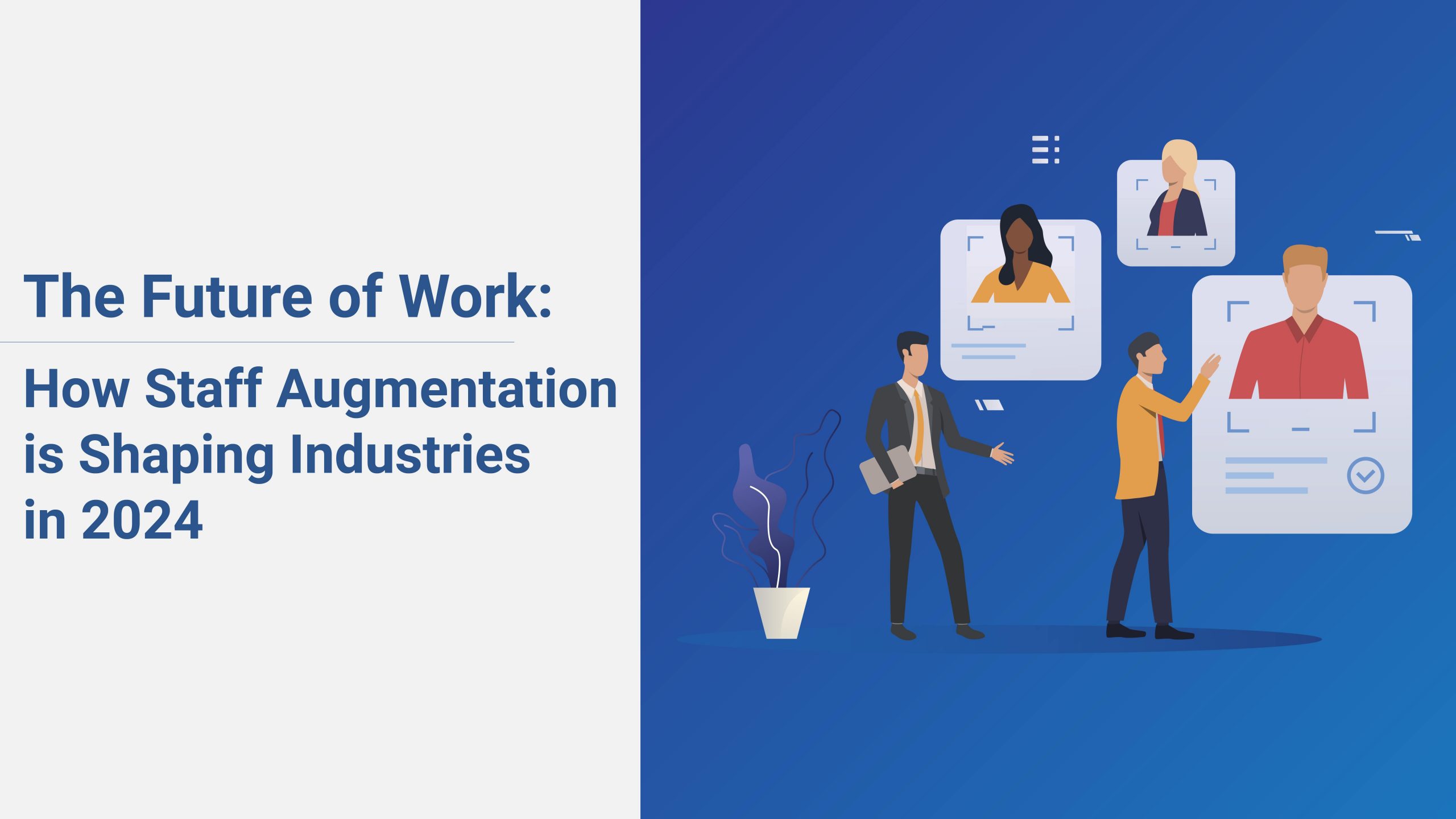The Future of Work: How Staff Augmentation is Shaping Industries in 2024

As we navigate through, the concept of work and how it’s conducted continues to evolve at an unprecedented pace. Amidst this transformation, staff augmentation trends has emerged as a powerful force in 2024, reshaping industries by offering a flexible, efficient, and strategic approach to workforce management.
Let’s delve into how staff augmentation is setting the stage for the future of work and why it’s becoming an indispensable tool for businesses aiming to stay ahead in their respective fields.
1. Bridging the Talent Gap in a Global Market
One of the most significant challenges industries face today is the talent gap, particularly in specialized fields such as technology, healthcare, and finance. Staff augmentation addresses this by providing access to a global talent pool, allowing businesses to fill skill gaps quickly and efficiently without the geographical constraints that once limited talent acquisition. This global reach not only enhances diversity but also brings in fresh perspectives and innovation, driving industries forward.
2. Enabling Agile Business Operations
The need for agility in business operations has never been more critical. Staff augmentation offers the flexibility to scale the workforce up or down based on project demands and market conditions. This agility ensures that companies can respond to changes swiftly, maintaining a competitive edge. In industries where project scopes and timelines can shift rapidly, such as IT and construction, this flexibility is invaluable.
3. Promoting a Focus on Core Competencies
With staff augmentation, businesses can allocate external resources to handle specialized tasks or projects, allowing their permanent staff to concentrate on core competencies and strategic objectives. This not only boosts productivity but also ensures that companies are leveraging their internal resources most effectively, fostering innovation and growth.
4. Cost-Effective Solution for Dynamic Workforce Needs
The economic benefits of staff augmentation cannot be overstated. By adopting this model, companies can significantly reduce costs associated with hiring and training, as well as minimize the overheads tied to permanent employment. This cost efficiency is particularly beneficial for startups and SMEs, providing them access to expert skills without the hefty price tag.
5. Paving the Way for the Future of Remote Work
The global shift towards remote work has accelerated the adoption of staff augmentation. This model fits seamlessly into the remote work paradigm, offering businesses the opportunity to work with the best talent from around the world, regardless of their physical location. As companies become more comfortable operating in a virtual environment, staff augmentation will continue to play a crucial role in facilitating remote work, breaking down the barriers of traditional office settings.
Conclusion
The landscape of work is undergoing a profound transformation, and staff augmentation is at the forefront of this change. By providing businesses with the tools to bridge talent gaps, enhance agility, focus on core competencies, achieve cost efficiency, and adapt to the remote work trend, staff augmentation trends is not just shaping the future of work in 2024 it’s defining it.
As industries continue to evolve, the adaptability and strategic advantages offered by staff augmentation will become increasingly vital. For businesses looking to thrive in this new era, embracing staff augmentation is not just an option; it’s a necessity.
FAQs
Q: How does staff augmentation impact company culture?
A: Properly integrated, staff augmentation can enrich company culture by introducing diverse skills and perspectives. It’s crucial for businesses to ensure seamless collaboration between permanent and augmented staff to foster a cohesive and inclusive culture.
Q: Is staff augmentation suitable for all industries?
A: While particularly beneficial for industries with a high demand for specialized skills, such as IT, healthcare, and finance, staff augmentation can be adapted to suit the needs of virtually any industry seeking flexibility and expertise in their workforce.
Final Thoughts
The future of work in 2024 is being shaped by the strategic implementation of staff augmentation trend across industries. By leveraging this model, businesses can ensure they remain agile, efficient, and competitive in the ever-evolving global marketplace. The key to success lies in embracing the change and harnessing the potential of staff augmentation to meet the challenges and opportunities of tomorrow.







